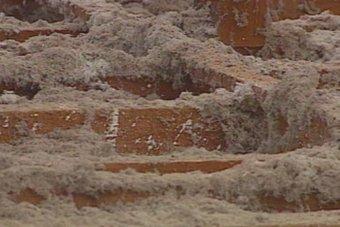Several different options are available when it comes to insulation. Asbestos and cellulose insulation are two of the most popular types. But what distinguishes them from one another? And which is better for your home? A product containing asbestos will have rock wool or a similar inorganic fiber material surrounding it, whereas cellulose insulation has paper- or cotton-like fibers surrounding and protecting it. Please continue reading if you’re interested in learning more about cellulose and asbestos insulation.
Asbestos Insulation
The majority of people are unaware that asbestos is an essential mineral. Even though asbestos is typically soft and flexible, it has excellent heat and corrosion resistance. The construction industry has used asbestos as a fire retardant and insulation material since the early 1950s, a period of more than forty years.
You can still find asbestos in the drywall tiles and the attic of older buildings and houses. The home’s living areas are considered to be in good condition because there are no damages or walls that expose asbestos fibers.
When asbestos particles are airborne and enter the spaces of the building you live in, it poses a very serious health risk.
Advantages Of Asbestos
- Due to its high heat resistance, asbestos is a material that does not burn easily.
- This is capable of producing an energy-efficient building due to its high thermal insulation capacity.
- Furthermore, asbestos is resistant to the elements.
- Older buildings still contain asbestos insulation because of its incredible durability.
- The material is less expensive.
- Maintaining and cleaning it are both easy.
Disadvantages Of Asbestos
- Asbestos poses a serious risk to both human and environmental health, as the majority of you are probably aware. The substance contains fibrous microparticles that, if swallowed or inhaled, may result in a variety of illnesses.

Cellulose Insulation
The Insulation made from cellulose is produced using a variety of materials as an alternative to asbestos, including hemp, cardboard, newspaper, straw, and other different substances. Boric acid is applied to cellulose and paper mixtures used in construction in order to give them fire resistance properties.
The two most common cellulose insulation types are dry cellulose and wet cellulose. It is sometimes referred to as loose-fill insulation. To blow the cellulose inside the wall, contractors can use holes and a blower.
It can also be used to fill wall voids. Builders have the choice of applying the wet spray to freshly built walls. The addition of water to the spraying is the primary distinction between wet spray and dry cellulose. It strengthens the seal, which will stop heat loss.
Similar to asbestos, cellulose works well inside walls, pipes, and wiring. In addition to providing insulation for your home, it aids in reducing fires. Cellulose is a major asset for building owners looking to go green because it is also a recyclable material.
Advantages Of Cellulose Insulation
- Green Building Material
- Effective Insulation
- Range of Applications
Disadvantages Of Cellulose
- Not Waterproof
- Fire Hazard
Differences Between Asbestos And Cellulose Insulation
While asbestos insulation is made of tiny, fibrous crystals that were once used in building materials and other products, cellulose insulation is made from recycled paper.
Asbestos insulation typically has a light brown or white color, whereas cellulose typically has a green or pink color. This is the main visual difference between the two types of insulation.
Comparing cellulose and asbestos insulation, there are several benefits of cellulose. It is less expensive to produce, fireproof, and does not release airborne toxins like asbestos. Conversely, asbestos insulation is more effective than cellulose insulation at insulating against heat and sound.
Insulation made of asbestos also has benefits. It can last a lot longer than cellulose insulation and is more resilient. It is also better at blocking heat and sound. However, it has been connected to a number of illnesses, including mesothelioma and lung cancer.
In the end, your particular needs and priorities will determine which type of insulation you choose. The best choice for you may be cellulose insulation if you’re looking for environmentally friendly and more cost-effective insulation material.
However, asbestos might be a better option if you require better durability or heat and sound insulation. Which insulation type will work best for your house or structure is ultimately up to you.
What Insulation Is Better For Your Home
Making the right choice for your home’s insulation is crucial. There are numerous types of insulation, but cellulose insulation and asbestos insulation are two of the most widely used.
Newspaper or other recycled paper products are used to create cellulose insulation. It is typically installed in attics and can lower energy costs while also enhancing your home’s overall energy efficiency. But over time, it can deteriorate and be vulnerable to moisture damage.
On the other hand, asbestos insulation is made of fibrous materials that are typically extracted from rocks or minerals.
Due to its capacity to withstand heat transfer, it was a well-liked option for homes a few decades ago. It has been outlawed in many nations because it is now recognized as a health risk.
Conclusion
It’s hard to discern the distinction between asbestos and cellulose. But, there are a few key ways to distinguish between cellulose and asbestos insulation. The first is that asbestos insulation will be brittle, meaning that a light touch will cause it to crumble or powder. Insulation made of cellulose should be odorless and not crumble.
Read More: What Is The Best Insulation For Exterior Walls? How To Choose?





